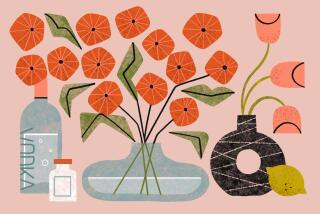Around the Yard
- Share via
Things to do this week:
* Plant perennials. Many perennial flowers bloom in summer and fall, so now is a good time to get them started in the garden. Japanese anemones are one of my favorite fall flowers--with masses of simple flowers on tall, airy spikes--but some gardeners have regretted getting them started, because in some soils and microclimates, they become aggressive spreaders. Physotstegia, another fall bloomer, can also spread aggressively, although it is easy to pull out the unwanted ones.
Other nonthreatening summer and fall bloomers are agapanthus, daylily, coreopsis, dusty miller, gaillardia, gayfeather, gazania, gerbera, heliathus, lion’s tail, nicotiana, penstemon, various salvias, Sedum ‘Autumn Joy,’ Shasta daisy, Tagetes lucida, thulbaghia, perennial verbena and yarrow.
* Leave bulbs alone. Some bulbs have already finished blooming, and the temptation is to cut them back to get rid of the floppy leaves--don’t! Most will happily spend the summer lying dormant in your garden soil if they are not kept too wet. If they are to bloom next year, however, they need to keep growing and storing energy for next season’s blooms. If anything, you want to lightly fertilize bulbs after they bloom, to keep them growing for as long as possible. You can shorten the foliage of exceptionally shaggy bulbs, such as saffron crocus or homeria, but leave at least half the length. You can cut off spent flower spikes on all bulbs; otherwise let the foliage brown naturally before removing.
The big exception to the “don’t cut back till they’re brown” rule are those bulbs that will not come back and flower, particularly tulips. Tulips will make leaves next year--probably where you least want them--but no flowers. So, while the bulbs can still be located, dig them out and toss them.






